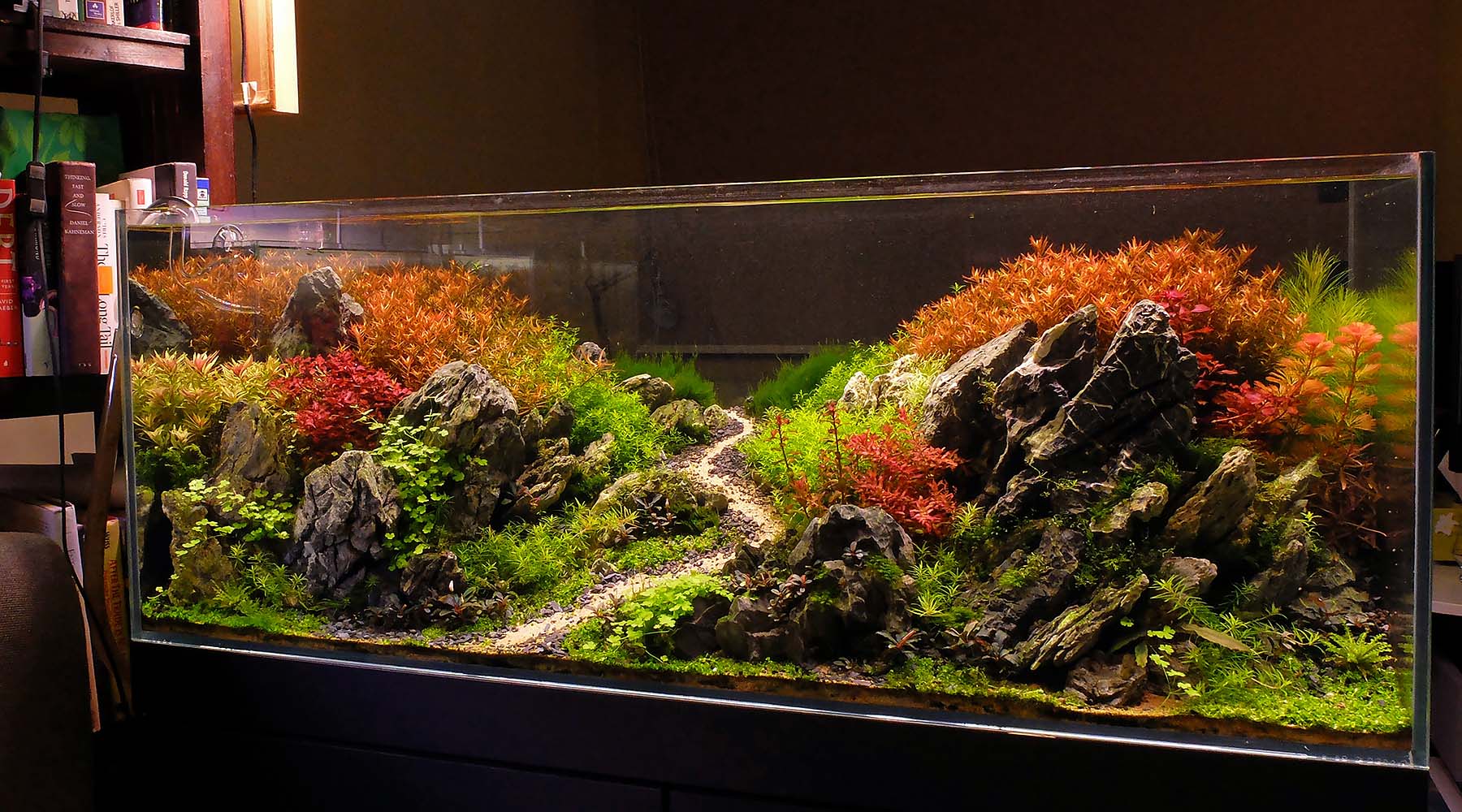What does tank stability mean?
At the basic level, it indicates that ammonia cycling is done and the tank’s microbial’s community has developed enough to digest volatile organic waste quickly enough that there will be no ammonia spikes affecting livestock or plants.
Furthermore, water should be crystal clear as bacteria bio-film binds even the finest particles – together with a working filter, tank water should return to a clear state quickly even if the substrate is stirred up. Tank water should smell fresh rather than foul. There should not be very significant surface film – this usually indicate that the bio-filter is not matured yet, or there is a significant source of organic waste.
There should be reduced incidence of algae – diatoms and green dust algae which are more common in fresh planted setups should disappear on their own. Sensitive livestock such as Caridina shrimps will thrive. Soil substrates that leech ammonia or volatile organics should have matured such that sensitive plants (such as Utricularia gramminifolia) will not melt if planted into the substrate.
A stable planted tank like this is one below is done in about 6 to 8 weeks. In our tanks, we typically wait a couple of months before adding livestock.
Key steps to quickly stabilize new tanks
1. Use a matured filter or mix a portion of soil from a previous setup in the new setup to seed the tank with microbes. Using bottled bacteria can speed up ammonia cycling.
2. Ensure good gaseous exchange and oxygen levels in the tank. Most microbes will multiply faster in a well oxygenated environment.
3. Plant densely from the start. Plants stabilize the system by absorbing ammonia, heavy metals and providing a favourable home for microbial life. Aim to have at least 50% of the tank surface area planted. Adding adequate nutrients/CO2/light from the start for plants to adapt well to the new environment is important.
4. More large water changes at the start of tank life cycle to remove volatile organics & ammonia. This is especially so if using soil substrates.
5. Do not add large amounts of livestock quickly, let the tank mature first.
6. Aim to keep parameters stable. This means avoiding products such as pH up/down, or harsh chemicals/algicides.
A new non-CO2 tank freshly setup. We cycled the tank for a week plus with mix of old soil and old filter media before planting. This tank is still relatively lightly planted – we would probably let the plants grow in some more before adding livestock.
To learn more about tank cycling and related articles, click here.
To learn more about gaseous exchange, click here.


